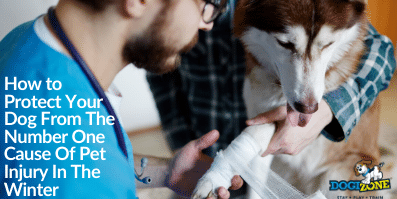How to Protect Your Dog From The Number One Cause Of Pet Injury In The Winter
Active dogs and dogs that spend time outdoors all year round have different risks for injuries based on the time of year. Even dogs that are only out for walks during the winter months are still at risk for developing one of the most common types of injuries that vets see at this time of year. 
Foot injuries are a significant factor in the winter months. Most owners are careful to ensure their dog is protected from dampness and cold at this time of year, and they even have warm sweaters and dog winter gear to help to keep the dog’s core warm and dry. However, this still leaves the feet, and more specifically the paws and pads, exposed to the snow, ice, and wet surfaces.
Issues to Consider
If you take a close look at your dog’s feet, you will notice the paws are not flat like our feet. Instead, they have hollows and grooves between each toe and the foot and between each pad. These hollow spaces are an issue in the winter as snow, and small fragments of ice can get into these hollows and be trapped. The body warmth from the skin partially melts the snow and ice, by the hair quickly freezes the semi-liquid, creating a hard, icy ball between each toe and the toes and the pad.
As the dog walks, this creates pressure on the skin, causing pain for the dog. Think of it as walking with a rock in your shoe that has lodged under your toes and is causing pain with every step. Unlike a rock, these hard balls of ice are difficult to dislodge as the ice now has embedded hair holding it in place.
The first sign of this problem developing is a dog that stops to lick or bite at his or her feet. Of course, the added moisture from licking just adds to the effect of building up ice, further holding the ball in place.
Salt used on roads can also become trapped in this area, further causing pain and irritation. Long nails that lift the front of the toes and the pad up and off of the ground can also contribute to the development of these painful balls of ice.
Best Protection
For dogs that are outdoors for short periods of time for walks and exercise, dog booties are a top investment. There are many different styles that are fitted for dogs of different sizes, and they prevent any snow, sand, or salt from getting into the feet of your dog.
There are also special products that are sold for dogs that are used in winter competitions such as sled dogs or skijoring dogs, as well as for police and search and rescue canines. There are several options in this musher’s wax that coats the foot and prevents snow from sticking to the pad, between the toes, or to the hair on the dog’s feet. This same product also protects from salt and sand, and it can be used all year to keep the dog’s feet in tip-top condition.

